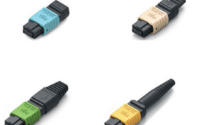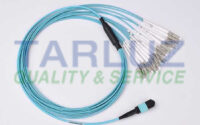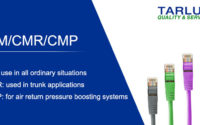How to choose a suitable Fiber Optical Fusion Splicer?
For communication engineering practitioners, a fiber optical fusion splicer suitable for their own use is the best working partner for their work. Facing so many welding machine brands on the market, how to choose is often a very headache problem, so how do we choose the most suitable fiber optical fusion splicer? Here are a few things we need to focus on.
Five aspects for you to choose a suitable fiber optical fusion splicer
First: types of project
It is necessary to understand the types of projects and the requirements of each project for the fiber fusion splicer. If you don’t know what your engineering requirements are, just go around and find out what kind of fiber fusion splicer you buy. You will be like 80% of people, not choosing the wrong machine, or wasting your own cost. You must first know what your project requires for the machine.
Second: types of fused fiber
Single core? Leather line? Pigtail? Or both? At present, some fixtures for fusion splicers can only support single-core fibers, and customers who are involved in FTTH need to be carefully considered. Perhaps you have had the experience: you need to replace the corresponding fixture when welding the leather or pigtail. You need to put a lot of fixtures in a box and replace them according to the type of fiber to be welded. You will be eager to have a three-in-one fixture that can be applied to all fibers without replacement.
Third: fiber alignment
There are two ways to align the light, the cladding alignment and the core alignment, which is also the difference between the four-motor trunking machine and the six-motor cable machine. The four-motor machine can achieve cladding alignment. The lens of the machine can clearly see the cladding of the fiber, and the cladding is completely butted, but the fiber wrapped inside can not be seen, which may be biased and the loss is large. The alignment of the core relative to the cladding is the addition of two focus motors on the lens, which allows the fibers in the cladding to be seen, allowing the fibers to be more accurately fused together. For short-range or FTTx projects, four-motor machines are fully qualified. However, for long-distance welding projects with high quality, the four-motor machine is incapable, and it is necessary to use a six-motor machine to achieve engineering expectations.
Forth: cost
As a high-precision, high-precision instrument, the welding machine is also very expensive in the event of a bump or drop or a human operation failure. The fusion splicer should be used as little as possible in the dusty state. When it is idle, put it in the box, avoid bumping, keep it clean, and carry out regular maintenance. During the use of the fusion splicer, the Battery and fiber cleaver are consumables that are frequently replaced. Although the price is not high relative to the machine, the cost of frequent replacement is not negligible. High-quality machines reduce the frequency of electrode and blade replacement, and of course the skilled operator can increase the life of these consumables.
Fifth: battery capacity
For outdoor welding, you need to consider the endurance of the fusion splicer. When you cross the mountains and cross the road, you will be able to travel long distances. If your equipment is running out of power, you can only look at it.
Conclusion
The last point is the price issue that we are most concerned about. At present, the machines on the market are mainly Japanese original machines and domestically produced machines. The Japanese original machines are very excellent in terms of machine quality and welding quality, but the price is very high. Domestic machines are getting better and better, and the price is cheaper, but the hard power is still worse for Japanese machines. Mainline machines with high quality requirements for welding or welding are recommended for expensive Japanese machines, short-distance communication engineering or fiber-optic FTTx engineering.


